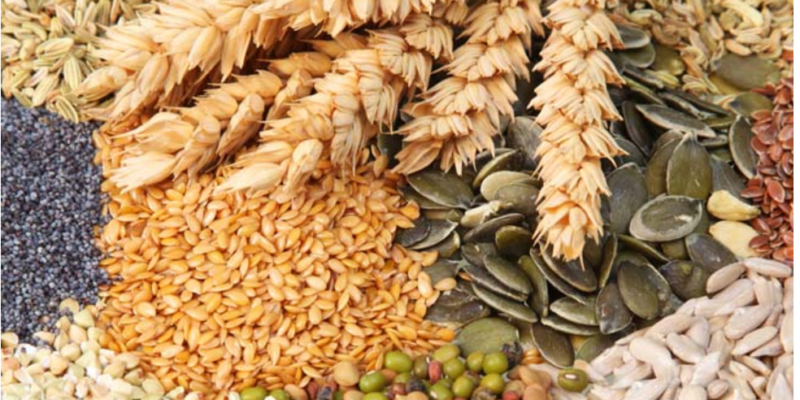
India is a prominent global grain producer, commanding a substantial market share. Its agricultural exports are mostly composed of cereals like rice, wheat, and maize. However, entering international markets presents unique opportunities and difficulties. For Indian farmers and the agricultural sector to reach their full potential, both must be understood.
The Rise of Indian Cereal Exports
India boasts a vast and varied agricultural area. The nation produces a wide range of grains that are highly sought after on international markets. Indian cereals are popular among customers abroad because of their excellent quality and diverse taste. For example, the large grains and fragrant nature of Basmati rice are well known around the globe. In global marketplaces, this particular kind of rice commands a higher price.
The Indian government strongly supports the export of agricultural goods. Improved export incentives, subsidies, and logistics are only a couple of the policies and efforts that have been proposed to assist with grain exports. Farming activities have also been altered by the utilization of super-advanced agricultural equipment, like Massey Ferguson, Preet, and Hindustan tractors. By expanding efficiency, these tractors assist farmers with delivering more at a lower cost.
Opportunities in the Global Market
Cereal demand is rising globally due to changing eating patterns and population growth, which offers Indian cereal exporters a fantastic chance. India’s grains find considerable demand in the Middle East, Africa, and Southeast Asia. Because of their high utilization rates, these regions mostly depend on imports to fulfil their food demands.
The advancement of farming innovation has significantly influenced the development of items. Modern agricultural tools, such as Massey Ferguson and Hindustan tractors, enable farmers to crop large areas efficiently. Likewise, surplus production may be made ready for sale in global markets.
The developing interest in organic and non-GMO grains also presents opportunities for Indian farmers. Organic farming techniques have long been utilized in Indian agriculture. This trend might allow organic cereals to expand their share of the overall industry and cost.
Challenges in Exporting Indian Cereals
Despite the substantial prospects, Indian cereal exporters confront several obstacles. One key challenge is the unpredictability of global market pricing. Grain costs are affected by several elements worldwide, including shifts in trade policies, variations in weather conditions, and geopolitical instability. These variations may impact the profitability of Indian cereal exports.
Another challenge is the stringent quality standards imposed by importing countries. Indian cereals must meet these quality standards to enter international markets. This requires investment in better storage facilities and quality control measures. The adoption of contemporary agricultural equipment, such as Preet Tractors, may help increase the quality of grains by guaranteeing improved cultivating techniques.
Issues with supply chains and logistics present serious obstacles as well. Cereals must be stored and transported efficiently to preserve their quality while en route. Although India’s infrastructure is improving, gaps remain that must be closed. Improvements to ports, highways, and storage facilities are necessary to ensure seamless exports.
Government Initiatives and Support
The Indian government has been acting to assist cereal exporters. Various programmes and subsidies have been carried out to advance exports. The Agricultural and Processed Food Products Export Development Authority (APEDA) is one organization that offers financial support for infrastructure development. It also helps in market research and the promotion of Indian cereals abroad.
The government is also concentrating on enhancing agricultural methods through the adoption of cutting-edge farming technology. To improve quality and production, Hindustan and Massey Ferguson tractors should be used. Large-scale farming relies intensely upon the proficiency and trustworthiness of these tractors, which are notable for them.
Besides, the government is also seeking economic accords with different countries to lower tax boundaries and integrate the section of Indian grains into worldwide business sectors. Farmers and exporters must, however, continue to learn about and benefit from these rules.
Future Prospects
Indian cereal exports appear to have a bright future as long as the obstacles are successfully overcome. Adopting contemporary farming methods and technology will be essential in this regard. The adoption of advanced equipment like Preet Tractors and Hindustan Tractors can significantly boost productivity and quality.
Infrastructure also needs continuous improvement. Improved ports, storage facilities, and transportation networks will guarantee that cereals arrive in foreign markets in optimal shape. Research and development expenditures can also result in the production of high-yielding, disease-resistant grain cultivars.
Conclusion
With enormous export potential, Indian grains are very competitive in the world market. There are a lot of chances for Indian farmers and exporters due to the increase in worldwide demand. However, there are obstacles to overcome, such as shifting costs, requirements for quality, and logistical problems. Export growth can be facilitated by government assistance as well as the use of contemporary farming machinery like Massey Ferguson, Preet, and Hindustan tractors. India has the potential to enhance its status as a prominent exporter of cereals and make a substantial contribution to the world’s food supply by surmounting these obstacles.









